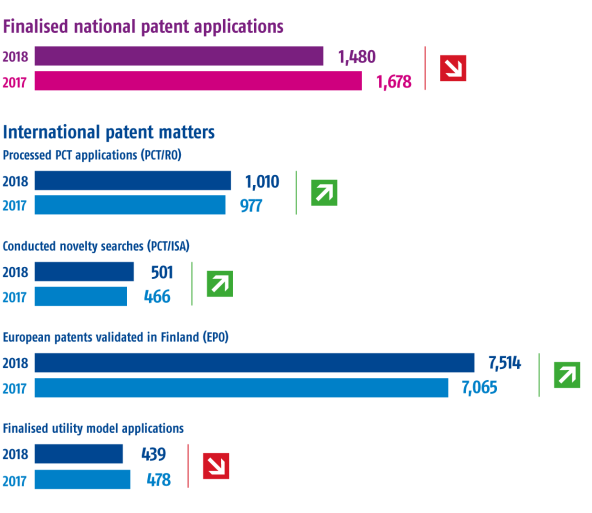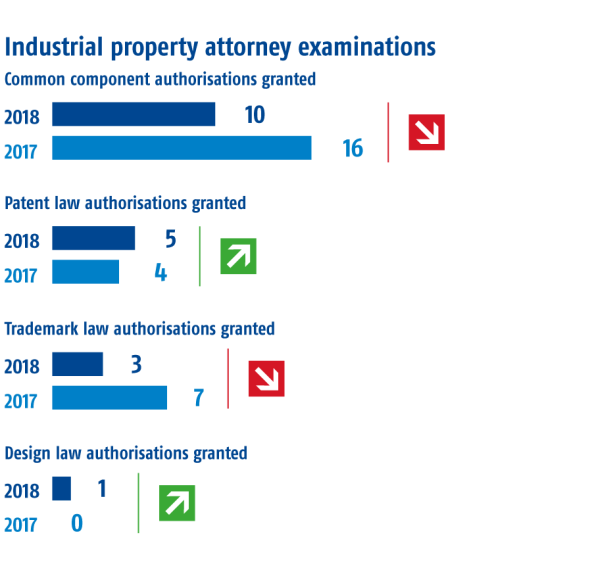In patents, the focus was on artificial intelligence and IT development
Patent offices in a number of different countries are testing AI-based applications in tasks such as the processing of patent applications. By means of artificial intelligence, the PRH also continued working to improve the efficiency of the novelty search.
Little change in the number of patent applications
The number of national patent applications remained at previous years’ levels and there was a slight increase in the number of international applications. The number of European patents validated in Finland also increased.
Shorter processing times
On average, the examination of each national patent application took 2.4 years, which was slightly less than in the past.
However, minimising the processing time should not be the prime concern in patent matters as the quality of the novelty search and providing a reliable estimate of the completion date are more important. In 2018, the PRH was able to fulfil its service promise by processing 98% of the novelty searches within the time limit of 8 months, whereas the median time for processing was 6.7 months.
In order to evaluate the quality of research on patent applications, we continued what is known as harmonising research (benchmarking) between the PRH and the European Patent Organization (EPO).
Entry into force of the unitary patent system still open
There is still uncertainty about the entry into force of the unitary patent system drafted in the EU. The unitary patent would be important for companies requiring EU-wide patent protection.
Utility models
More than 12,000 utility models
In March, the PRH registered its 12,000th utility model. The utility model protection was granted to an anti-skid shoe cover.
Registering a utility model provides quick protection for a technical solution but the novelty of the invention is only examined at separate request. The PRH registered the first utility models in 1992.



